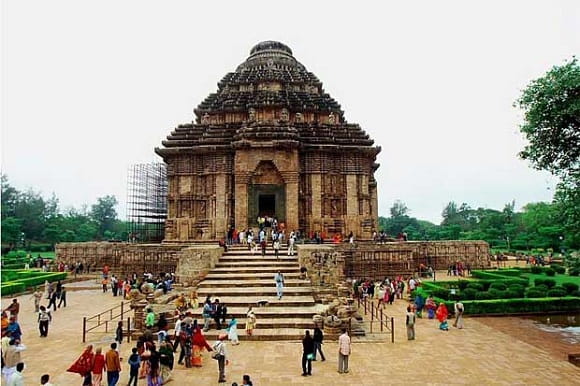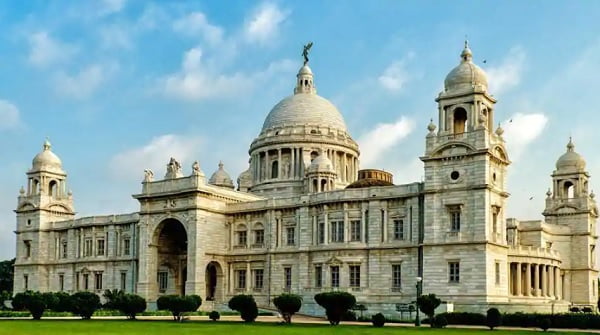Travel north, south, east or west in India, and you will discover shrouded jewels that offer stunning structures and exciting stories. UNESCO recognises World Heritage Sites as places that are important to the collective interests of humanity, independent of the domain on which they are located. Here is a collection of best UNESCO World Heritage Site in India that must be on each millennial’s must-visit list.
Ajanta Caves, Maharashtra
The Ajanta Caves are Buddhist caverns worked in two stages. The first was from the second century BC. The second, further increments were made amid the fifth and sixth hundreds of years AD of the Gupta dynasty time period.

Ellora Caves, Maharashtra
The Ellora Caves are a social blend of religious crafts of Buddhism, Hinduism and Jainism. Dated to 600 to 1000 AD, they are an impression of masterful creation of the old human civilization of India.
Sun Temple, Konark
The Konark Sun Temple is a thirteenth century Sun Temple (otherwise called the “Dark Pagoda”), at Konark, in Odisha. It is worked as the chariot of Surya (Arka), the sun god with 24 wheels, and is passionately designed with symbolic stone carvings and driven by a group of six horses.

Khajuraho Group of Monuments, Madhya Pradesh
The troupe of monuments that have survived belong to the Hindu and Jain Religious practices with a striking combination of sculpture and architecture; the best case of this extraordinary feature is seen in the Kandariya Temple.

Hampi, Karnataka
Hampi, a temple town in northern Karnataka, was once the capital of the historical Vijayanagara Dynasty of South India that ruled for over 200 years. The Vijayanagara Empire created its capital round Hampi, summoning it Vijayanagara. It is becoming a popular destination among Indians and foreigners.
Red Fort, Delhi
The Red Fort Complex, otherwise called Lal Qila is a castle stronghold worked in the seventeenth century by Shahjahan (1628– 58), the fifth Mughal ruler as a highlight of his new capital city of Shahjahanabad. The compositional plan of the structures worked inside the post speaks to a mix of Persian, Timuri and Indian design styles.
Qutub Minar, Delhi
Qutub Minar is a red sandstone tower of 72.5 meters (238 ft) tall. Built in the start of the thirteenth century, the complex of structures contains buildings, the Alai Darwaza Gate (1311), the Alai Minar (a deficient hill of the planned Minar or tower), the Qubbat-ul-Islam Mosque (the initial existing mosque in India), the tomb of Iltumish, and an Iron Pillar.

Fatehpur Sikri, Uttar Pradesh
Fatehpur Sikri, “the City of Victory,” was built during the second half of the sixteenth century by the Mughal Emperor Akbar (1556– 1605). Fatehpur Sikri is a little city in northern India, barely west of Agra.

Mahabodhi Temple at Bodh Gaya, Bihar
The temple was built by Emperor Ashoka in the third century BC (260 BC) around the Bodhi Tree Ficus religiosa (toward the west of the temple). Respected and purified as where Siddhartha Gautama Buddha was enlightened in 531 BC, and after that engendered his divine knowledge of Buddhism to the world.

Hill Forts of Rajasthan, Rajasthan
Rajput fortresses are renowned for their protective architecture. They include large territories and even entire villages in walled compounds. The heritage hill forts of Rajasthan comprises of Ranthambore Fort, Chittor Fort, Kumbhalgarh Fort, Gagron Fort, Amer Fort, Jaisalmer Fort. These fort complexes include royal residences, Hindu and Jain temples, urban centres and trading centres.
Khangchendzonga National Park, Sikkim
The Khangchendzonga National Park also known as Kanchenjunga comprises a unique diversity of plains, valleys, lakes, glaciers and magnificent, snow-capped mountains covered with old forests, including the world’s third most astounding peak, Mount Khangchendzonga.

Victoria Memorial, Kolkata
The Victoria Memorial is a huge marble structure in Kolkata, India, which was created between 1906 and 1921. It is devoted to the memory of Queen Victoria (1819–1901) and is now a museum and visitor destination.







